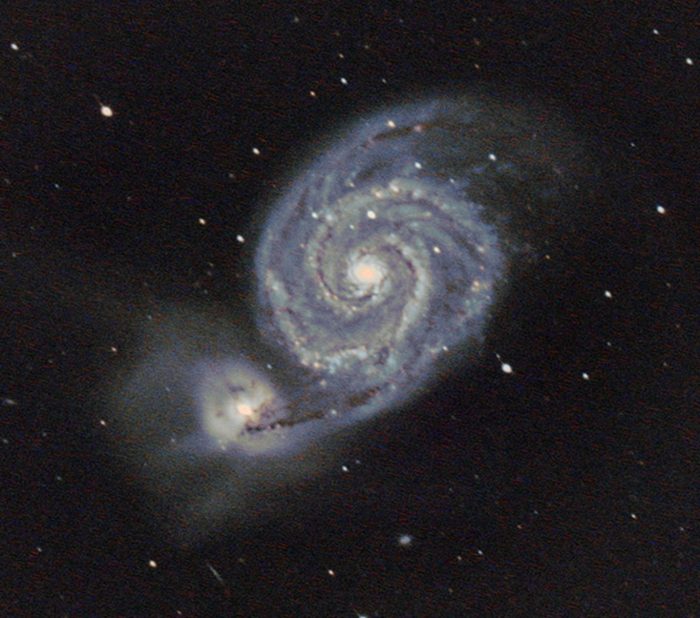Night Sky: Collisions in space and more highlights for April
This is an image of NGC 4485 and 4490, the Cocoon Galaxies. The smaller galaxy is NGC 4485.

These galaxies collided with each other several million years ago. The encounter of the two galaxies distorted their shape and appears to have started a large amount of star creation in both. The blue colors indicate huge numbers of young, blue stars.
NGC 4485 and 4490 were discovered by William Herschel in 1788. They are believed to be between 25 to 50 million light-years away from us (sorry my sources really differ on this), but only 24,000 light-years apart! NGC 4490 has a visual magnitude of +9.8 and NGC 4485’s is +11.9.
Another example of galactic collision can be seen in this image of M51 and the much smaller NGC 5195 (also known as M51b).

It’s believed that M51b collided with M51 about 500 million years ago. They still seem to be bound together as evidenced by the bridge of stars between the two. Some astrophysicists believe the two are slowly merging together. The collision of the two appears to have sparked a significant amount of star formation as evidenced by the large area of blue stars. Remember blue stars burn out in about 10 million years!
M51 has a visual magnitude of +7.8. M51b’s magnitude is +9.5. Both galaxies are about 28 million light-years away from us.
What you can look for in April’s Night Skies
Uranus continues as the only planet in the evening night skies. With a visual magnitude of +5.8, it is very difficult to see without a telescope or good pair of binoculars. Look for Uranus about 20° above the western horizon right after dusk.
The early morning skies will be much more interesting. Mars, Saturn, and Venus all rise within ten minutes of each other. Mars leads the way at 4:35 a.m., followed by Saturn at 4:43 a.m., and Venus at 4:45 a.m. That means the three will appear to form a fairly tight triangle. Then Jupiter will rise at 6:02 a.m. followed by Neptune five minutes later. Don’t expect to see Neptune unless you have some very good binoculars.
The Lyrids meteor shower peaks on the night of April 21st. The best viewing will be at 4 a.m. The shooting stars will appear to originate about 70° above the Eastern Horizon very close to the bright star, Vega!
Moon Phases:
New Moon is the 1st
1st Quarter is the 9th
Full Moon 16th
Last Quarter is the 23rd














